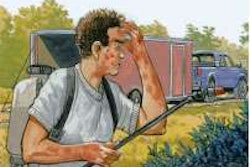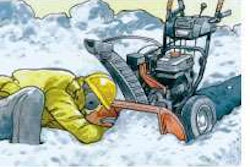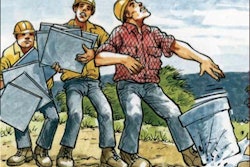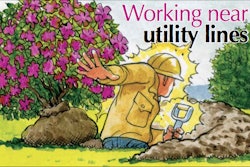Following a few basic rules can help prevent serious injuries on the job.
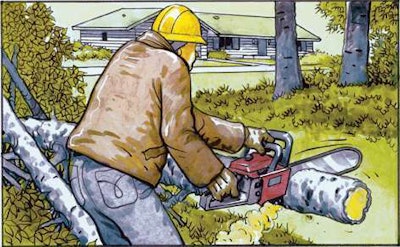
As a result, he sustains massive chest and head injuries and dies at the scene.
The bottom line: The victim was fatigued from working alone for five hours prior to the accident, and was using an older model chainsaw that was not properly maintained. Chainsaw safety is a huge concern for the landscape industry, and records from the U.S. Consumer Product Safety Council show there are more than 36,000 chainsaw injuries annually. The average injury requires 110 stitches and costs more than $12,000.
Here are tips to prevent chainsaw accidents:
• Before you start the chainsaw, read the manufacturer’s operating instructions. These are in a manual your employer should provide.
• Check controls, chain tension and all bolts and handles to ensure they are functioning properly and adjusted according to the manufacturer’s instructions.
• Make sure the chain is sharp and the lubrication reservoir is full.
• Start the saw on the ground or another firm support. Never drop-start a chainsaw or start it against your chest.
• Use approved containers for transporting fuel to the saw.
• Dispense fuel at least 10 feet away from any sources of ignition.
• Use a funnel or flexible hose when pouring fuel into the saw.
• Never attempt to fuel a running or hot saw.
• Start the saw with the chain’s brake engaged.
• Clear dirt, debris, small tree limbs and rocks from the saw’s chain path. Look for nails, spikes or other metal in the tree before cutting.
• Never work alone.
• Never operate a saw above your chest.
• Shut off the saw or engage its chain brake when carrying the saw even short distances and especially when walking on rough or uneven terrain.
• Keep your hands on the saw’s handles, and maintain secure footing while operating the saw.
• Wear proper personal protective equipment, including hand, foot, leg, eye, face, hearing and head protection.
• Do not wear loose-fitting clothing.
• Be careful that the trunk or tree limbs will not bind against the saw.
• Watch for branches under tension; they may spring out when cut.
• Be cautious of saw kickback. To avoid kickback, do not saw with the tip. If equipped, keep tip guard in place.
• Gasoline-powered chainsaws must be equipped with a protective device that minimizes chainsaw kickback. If a saw your company uses doesn’t have this device, bring the absence to the attention of a supervisor or safety manager.


